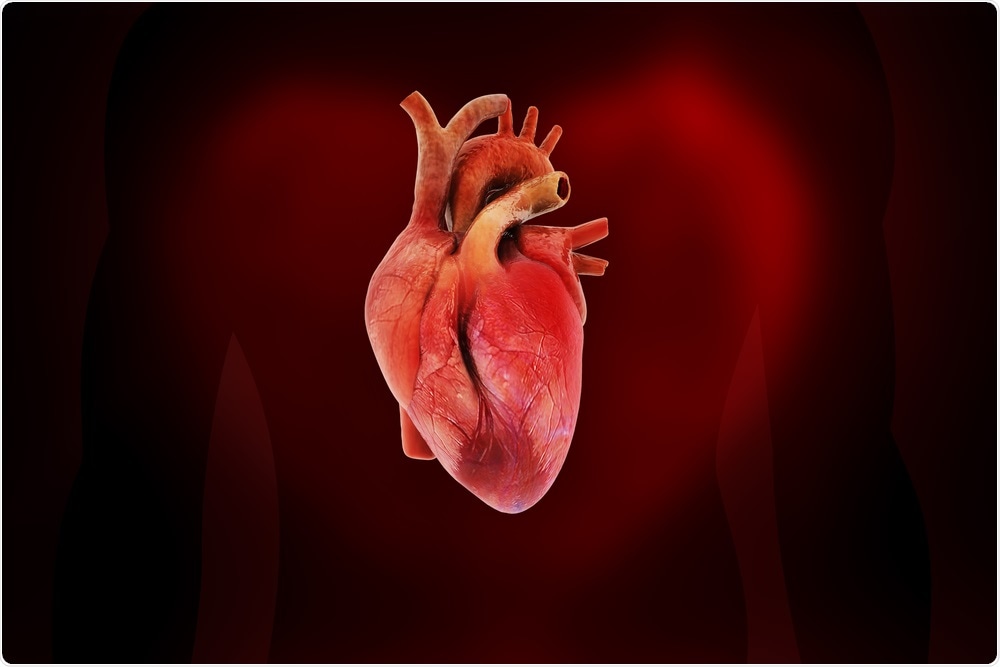
‘Promising’ results for beating heart patch that repairs heart cells after cardiac arrest
Researchers from the British Heart Foundation have developed a blood test that flags up heart failure early on and a “pumping” patch that could help to repair heart damage after an attack. Clinical trials testing the patches on patients will begin within the next two years.
 CokGen | Shutterstock
CokGen | ShutterstockThe thumb-sized patch, which is grown in a lab from a patient’s own cells, is sewn onto the heart, where it eventually turns into healthy functioning muscle.
It contains up to 50 million stem cells that have been programmed to turn into beating muscle, a development that could benefit hundreds of thousands of people who have experienced cardiac arrest.
The patch is designed to support damaged muscle and help the heart to beat more efficiently. It also releases chemicals that stimulate the existing heart cells to repair and regenerate. It has shown promise in animals, and clinical trials testing the patch in patients are set to begin within the next two years.
In lab tests on rabbits, the patches appeared to be safe, said experts from Imperial College London at the British Cardiovascular Society conference in Manchester. The patches started to beat spontaneously after three days and began to mimic the action of heart tissue within one month. This improved heart function following cardiac arrest and blood vessels within the heart were able to grow into the patch.
What happens during a heart attack?
During a heart attack, a clogged artery prevents blood from reaching the heart muscle, which is then starved of crucial nutrients and oxygen. Parts of the heart muscle are destroyed, which weakens it and reduces its pumping power. This can eventually lead to incurable heart failure, which currently affects around 920,000 people in the UK.
Scientists say one or more patches could be sewn onto the heart of a cardiac arrest victim to physically support the heart and prevent or reverse damage to the muscle.
Improved detection of heart failure
The development comes as researchers also announced a new blood test for the detection of heart failure that is significantly more accurate than the current test and could be made available on the NHS.
Increased levels of a protein called B-type natriuretic peptide (BNP) indicate a person is at risk for heart failure and currently doctors use a standard blood test to check the BNP concentration. However, factors such as obesity, older age and the use of certain medications also increase BNP levels, so the test is not completely reliable.
Now, scientists at Queen's University Belfast have overcome this issue by measuring blood levels of other key proteins, which led to the discovery of 25 proteins in the blood of heart failure patients.
After further testing of 400 blood samples taken from patients with and without heart failure, the researchers found that testing for the 25 proteins, as well as BNP, provided a far more accurate diagnosis of heart failure. Tests also detected signs of heart failure in patients who had not yet presented with significant clinical symptoms, a development that could help to prevent long-term heart damage.
Research fellow at Queen's University, Claire Tonry, says: "There's an urgent need to develop tests that can diagnose heart failure at an earlier stage and with greater accuracy in order to improve outcomes for patients with the disease.
Heart patches of the future
The British Heart Foundation, which is funding the research, says that in the future, the patches could one day serve as an off-the-shelf treatment.
Scientists say the ultimate goal is to have a stockpile of pre-made heart patches that would be compatible with any patient and ready to quickly implant when a person has a heart attack.
Associate medical director at the British Heart Foundation, Professor Metin Avkiran, says the heart patch is a prime example of world-leading research that has the potential to mend broken hearts and transform lives around the globe. If the benefits to heart attack victims can be proven in clinical trials, it would be a great leap forward for regenerative medicine:
“Heart failure is a debilitating and life-changing condition with no cure, making everyday tasks incredibly difficult. If we can patch the heart up and help it heal, we could transform the outlook for these people.”
Heart attack symptoms
The symptoms of a heart attack vary from one person to another, but some of the most common symptoms include:
- Sudden onset of persistent chest pain or discomfort
- Pain radiating down the right arm or into the back, neck, jaw or stomach
- Nausea
- Sweating
- Lightheadedness
- Shortness of breath
What to do if you think you may be having an attack
A person who thinks they may be having a heart attack must call the emergency services immediately. It does not matter if you are not sure whether you are having an attack; it is important that the symptoms are checked anyway.
Once an ambulance has been called, it is important to do the following:
- Sit down and stay calm
- If you can, take a 300mg dose of aspirin
- Wait for the paramedics
Source:
'Pumping heart patch' ready for human use. BBC News Coverage. bbc.co.uk/news/health-48495313.























.png)











No hay comentarios:
Publicar un comentario